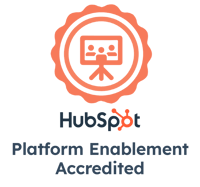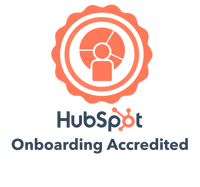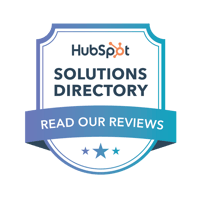It’s easy to chase visibility everywhere online and miss the one place it matters most: right in your own backyard.
Local search is often where your next customer starts. Whether someone’s looking for a service provider down the street or a manufacturer in the same region, you want your brand to show up first.
That means your online visibility isn’t just about big national-scale tactics: it’s about showing up when and where people are already searching for you.
Local SEO isn’t hard, but it’s easy to get wrong. A few missed updates or small oversights can quietly block you from the customers who are most likely to buy. But if you know what to look out for, then you know how to reach that valuable local market.
In this guide, I'll break down some of the most common search marketing mistakes I see and how to avoid them - plus, I'll dig into how AI is changing the way people find local businesses.
Related Content: Get Your Website Grade in Seconds!
Why Local SEO Still Matters
Even within this digital world, consumers are still looking for nearby solutions. When someone searches “best coffee near me," they want that local service. This applies to B2B as well, where locality isn't just about convenience: it's also about choosing a partner that understands your needs because they operate in the same area.
Local SEO isn’t just about ranking higher on Google. It’s also about establishing credibility. When your business consistently shows up in local search results, maps, and reviews, people start to trust that you’re the real deal.
It also supports every stage of the buyer’s journey, from discovery to decision. Whether someone’s just starting to explore or comparing final options, strong local visibility helps guide them to your business.
How AI Impacts Local Search
Tools like Google’s AI Overviews and voice search pull answers directly into search results. That means Google is prioritizing businesses with clear, relevant, and well-structured content.
AI rewards local SEO that’s specific and conversational. When your website answers real customer questions in natural language like “Who installs pools near me?” or “What’s the best HVAC service in Bloomington?” you’re more likely to show up.
The more your content reflects how people actually search, the better your visibility will be across Google’s evolving tools. This means that following best practices for local SEO is also following best practices for AI search.
Related Content: What is Loop Marketing? Marketing in the AI Era
Mistake #1: Ignoring or Inconsistent Business Listings
Many businesses have outdated NAP information (name, address, phone), scattered across directories. One small mismatch between your Google profile, Yelp, or Facebook listing can confuse both customers and Google.
Inconsistency tells search engines you’re unreliable, and that hurts your rankings.
How to avoid it: Use a tool like Moz to update and sync your information automatically. If you’re doing it manually, set a quarterly reminder to check and refresh your listings.
Mistake #2: Neglecting Google Business Profile
Your Google Business Profile (GBP) is often a customer’s first impression of your business. Because it’s part of Google’s own ecosystem, it heavily influences how and where you appear in search and map results.
Too many businesses set it up once and forget it. A stale profile signals inactivity.
How to avoid it: Complete every field with accurate information, add fresh photos, and update your business description. Post updates, offers, and events regularly. Review your profile every 4-6 months to keep it current and engaging.
Mistake #3: Forgetting About Reviews and Reputation
Reviews aren’t just nice to have; they’re one of the strongest trust signals for both Google and customers. A mixture of old and newer reviews with various ratings helps build credibility.
Another important trust factor is how a business responds to feedback. Ignoring reviews - especially negative ones - sends the wrong message. A response shows you’re paying attention.
How to avoid it: Ask happy customers to share their experience. Respond to every review quickly and professionally. For negative reviews, keep your tone friendly, thank customers for feedback, and offer to take it offline for a resolution (Ex: "We'd love to resolve this for you. Call us at 123-456-7891 to discuss how we can make this right.")
Mistake #4: Weak or Over-Optimized Local Content
Good local SEO depends on balance. Some businesses skip local relevance entirely, while others overdo it by cloning pages and keyword stuffing. Ever seen a website with identical service pages, just using different location names?” Google sees it too, and doesn't reward it.
Generic content that could apply anywhere doesn’t perform well. Neither does over-optimized content that looks spammy. It's all about hitting that balance.
How to avoid it: Use local terms naturally. Add them to your homepage headings, service descriptions, and blog topics where they make sense. Create unique pages for different service areas, spotlight customer stories, and highlight regional trends. Each page should feel personal to the community it serves.
Mistake #5: No Local Backlinks or Partnerships
Local backlinks act like digital word of mouth. When reputable organizations in your area link to your site, it tells Google that your business is part of the local network and can be trusted.
Many companies overlook this simple opportunity.
How to avoid it: Partner with nearby businesses, chambers of commerce, or community organizations. Sponsor local events, collaborate on promotions, or exchange guest posts. Even a quick email that says, “We linked to your site on ours, can you do the same?” can strengthen your visibility.
Mistake #6: Poor Mobile Experience
Most local searches happen on mobile devices. If your site loads slowly or is hard to navigate, customers won’t stick around.
A poor mobile experience hurts both your rankings and your sales. A mobile-friendly website isn’t just nice to have; it’s essential.
How to avoid it: Optimize your site speed and make it easy to find key actions like “Call Now." Simplify your layout and test your site on multiple devices.
Related Content: Top 10 Reasons Your Business Needs a Website Redesign
Mistake #7: Overlooking Schema Markup
Schema markup is behind-the-scenes code that helps Google understand your business. It’s what tells search engines your hours, location, reviews, and FAQs. Without it, your website might not appear with the rich details that stand out in results.
Depending on your CMS (your website builder), you can either add schema manually with the help of a developer or install a plugin that makes it easier to do it yourself.
How to avoid it: Add local business schema to your site. Include key info like your address, hours, and review data. It’s a small technical step that can make a big difference in how your business appears in search.
If you want more of a step-by-step guide to using Schema Markup, check out this guide from HubSpot: How to Use Schema Markup to Improve Your Website's Structure
Mistake #8: Not Aligning Local SEO with Paid and Offline Campaigns
When your SEO, advertising, and offline promotions are disconnected, searchers hit dead ends. If your paid ads or local events promote an offer that isn’t reflected on your website, you lose credibility fast.
Consistency builds trust and reinforces your brand wherever customers find you.
How to avoid it: Make sure your local SEO reflects your current campaigns. Update landing pages, offers, and business listings to match your ads and in-store promotions.
Mistake #9: Forgetting to Optimize for Voice and AI Search
More people are using voice search and AI powered tools to find local businesses. Instead of typing “pizza Minneapolis,” they ask, “Where can I get pizza near me?”
If your content doesn’t sound natural, you’ll miss those opportunities. Conversational content helps you rank in both voice search and Google’s AI Overviews.
How to avoid it: Write in everyday language and build FAQ sections around common questions. Think about how customers would phrase things out loud.
Related Content: AIO: How to Get Picked Up by AI Search
Mistake #10: Treating Local SEO as a “One and Done” Project
Local SEO isn’t a project; it’s an ongoing process. Search algorithms, competitors, and customer behavior all change.
Businesses that treat SEO like a checklist end up falling behind. The best results come from consistency, not one-time fixes.
How to avoid it: Schedule regular audits of your listings, keywords, and performance data. Keep an eye on what’s working and what isn’t, and adjust as needed. Partner with an experienced local SEO agency who will manage your SEO efforts for you.
Final Thoughts
Getting local SEO right is about being consistent, credible, and connected to your community. When your listings are accurate and you take the time to prioritize local SEO, Google takes notice - and so do your customers.
Whether you’re managing one location or several, staying visible in local search means keeping your digital foundation in good shape. You don’t have to do it alone.
Local SEO Services
BizzyWeb helps businesses show up where it matters most. Our SEO strategies drive measurable results: more traffic, better leads, and stronger visibility in your market.
Learn about our SEO services here.
BizzyWeb is a Minneapolis-based digital marketing and web design agency that helps companies get the high-quality leads they need to grow and thrive. Our tactics include inbound marketing, SEO, advertising, web design, content creation and sales automation. We are an accredited HubSpot Diamond Partner and we offer full-service HubSpot onboarding, enablement and strategy for new and current users.





